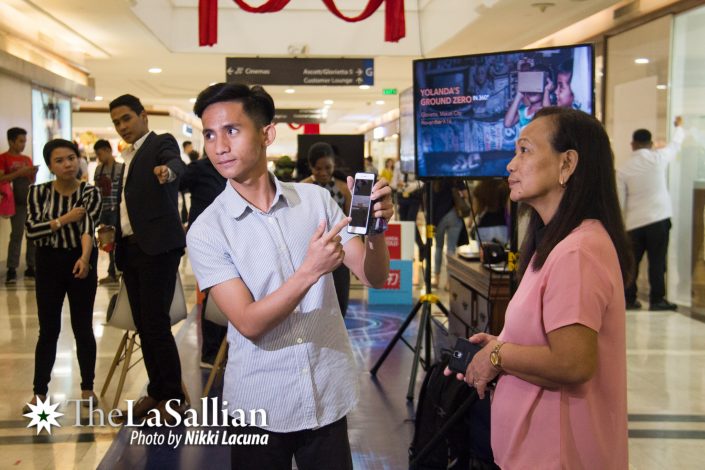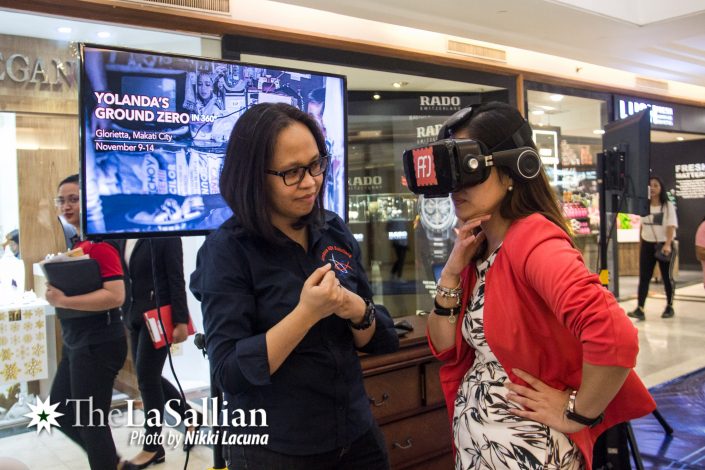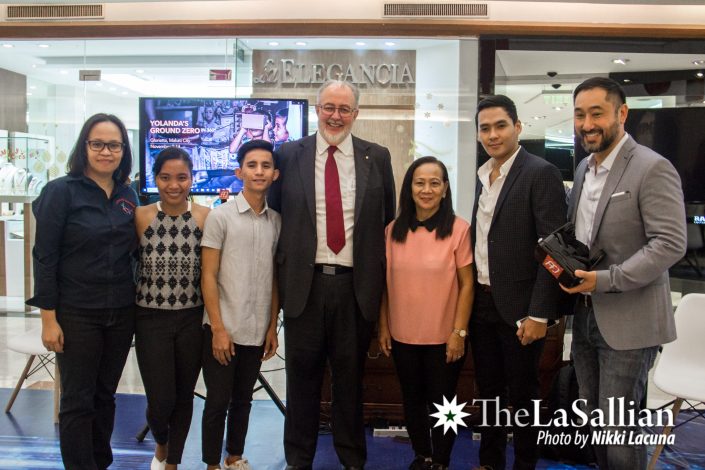Ground zero is a term often used to refer to an area left most devastated after a disaster; in the aftermath of the 315-kph winds of supertyphoon Yolanda in 2013, ground zero pertained to the barangay of 68-Anibong in Tacloban City. All the houses built on the coastline were destroyed. More than 50 people were found dead. Four out of five of their iron cargo ships were lost, with only one found lying next to the street in the wake of the incident.

For the people of 68-Anibong, the disaster threw their lives into chaos. Chet Bactol, the barangay chair during the typhoon, recounts when about 60 or more evacuees had to find shelter inside a single house amid the storm. “‘Doon sa loob ng bahay, safe [kami],” Bactol describes. “We were praying hard.”
(We were safe inside the house.)
Six years after the disaster, the survivors still live in the same tsunami-prone coastal area. Promises of relocation housing and financial recovery have been long forgotten by the government. To prevent their story from being lost in time, Postcards from Disasters brings to the forefront of the public eye a harsh reminder of the tragic event through a virtual reality exhibit entitled Yolanda’s Ground Zero in 360°, showcased in Glorietta 4, Makati, from November 9 to 14.
In the eye of the aftermath
Postcards from Disasters is a non-profit organization comprised of millennial journalists with the goal of sharing the stories of disaster survivors outside the confines of regular air time and news articles. Since 2016, they have been showcasing albums comprising of photos taken by disaster survivors themselves, giving them an avenue to display the experiences they have undergone and voice the sentiments they have dealt with since.

This year, the organization partnered with VRTY—a virtual reality (VR) company in Australia—to create an interactive documentary touring 68-Anibong. Using a 360-degree camera to fully capture the setting of the town, the barangay comes to life right before viewers’ eyes, alongside several stories that took place in the vicinity.
Unlike 360-degree videos that can be viewed on desktop computers and navigated using a mouse, the documentary provides viewers with a more interactive experience through VR headsets.
In the comfortable exhibition space of Glorietta 4, participants are transported to the still-stricken barangay of 68-Anibong: a town next to the coastline, lined up with shanties made of debris. With photographs, narrations, and accounts from the survivors painting the picture of disaster right in front of the viewers, the loss and suffering brought by supertyphoon Yolanda becomes all the more real, materializing before their very eyes.
Each scene begins with narration from Bactol to give context for certain events, ranging from describing the storm that decimated the town to provide a glimpse into peoples’ lives before the storm. Afterwards, the video would pause, allowing the viewer to freely roam and further explore the captured moment. One such scene takes place aboard the M/V Eva Jocelyn, the town’s only ship to survive Yolanda. Its figurehead, now known as the Yolanda Shrine, towers above viewers who look through the VR headset, casting an imposing image as though it were truly physically present in the same space and time as the VR user.
As scenes would play out, multiple markers would appear in frame. The viewers could let their cursor hover over these markers to reveal videos or photos carrying additional accounts of people surviving the storm and the repercussions of the disaster. For example, the marker on the M/V Eva Jocelyn opens a video revealing where the ship was found after the storm: on the side of the road. In another instance, a marker would reveal a photo of a senior citizen, Romeo, accompanied by an account of his fear of getting sick should he move out of the town, showing how attached the people of 68-Anibong are to their community.
Recording reality

Makoi Popioco, co-founder of Postcards from Disasters, began this project to remind people that the consequences of Yolanda are yet to be resolved. The government has been unable to fully rehabilitate the survivors’ homes and livelihoods, with numerous households still remaining in the tsunami-vulnerable area.
“Six years after Yolanda, hundreds of families are still living in the community. Why are they there? Because pending pa rin ‘yung shelters ng gobyerno,” Popioco explains. In an interview with ANC, the organization’s co-founder Julie Nealega also shares that only half of the government’s 200,000 promised resettlement houses have been built.
(The shelters expected from the government are still pending until now.)
To remedy this, the organization through this exhibit furnishes the community with an avenue to tell their story, effectively empowering them with the capacity to remind the public and the government that they are still here—without a home in a secure spot. “We want to work with these survivors, put their stories out here, so that together we can call on the government and the concerned agencies [to say] bilisan naman ‘yung mga gawa ng bahay nila, do something to address the problem they’re facing in the community,” Popcioco expresses.
(Together we can call on the government and the concerned agencies to prompt them to hasten their work of rebuilding houses for the survivors.)
The stories of the Yolanda survivors are a reminder for the need for sustainable development, especially in the aftermath of a destructive disaster—a development that has long been overdue for the people of 68-Anibong. The documentary aims to provide a voice for these citizens, showing unresolved matters remaining years after the storm, hoping to foster change and proper action while serving as a reminder of the worst that can happen to our fellow countrymen, who are so often put at the mercy of mother nature, not to mention government plans left hanging.
